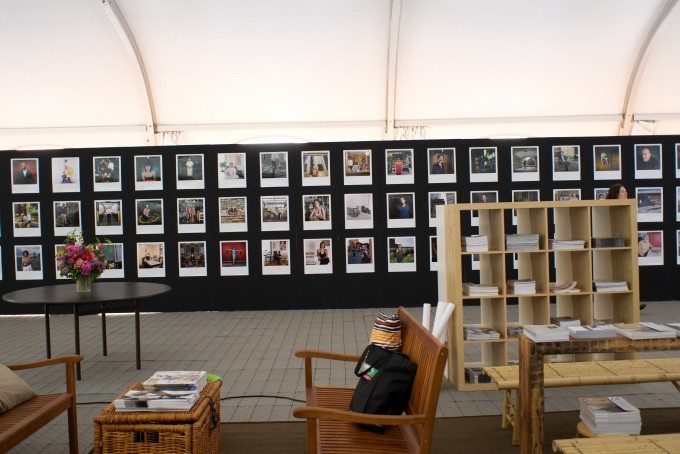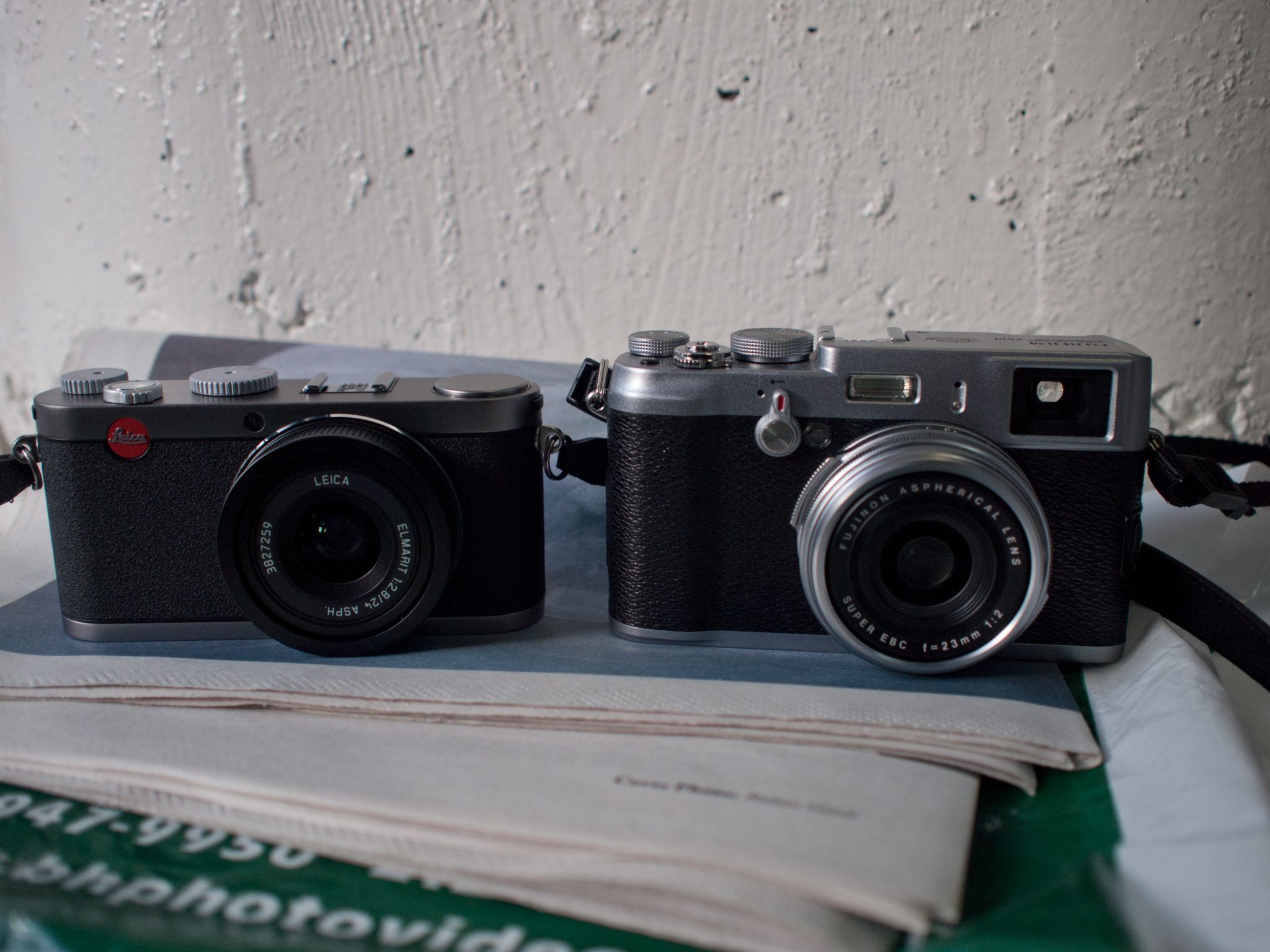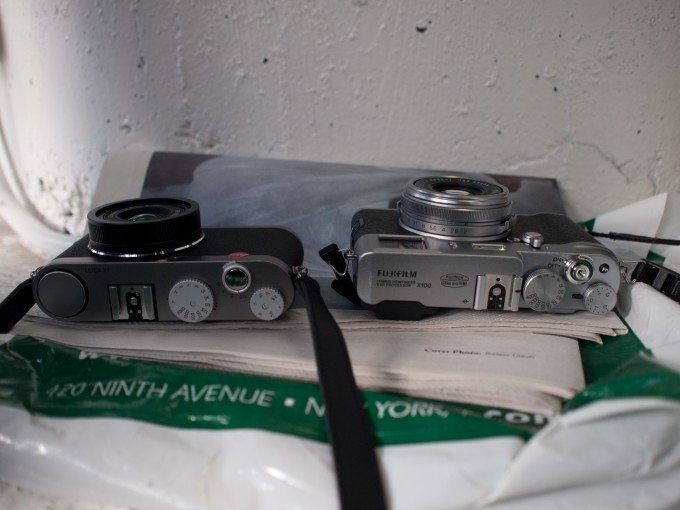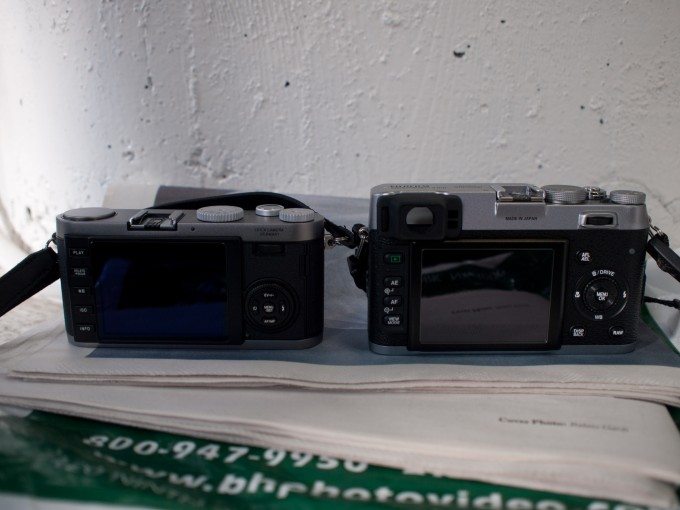Years and years of innovation, tweaking and image quality battling have come down to this single conflict of epic proportions! There have been lots of Leica X1 vs Fuji X100 comparisons, but we’re going to see if you can tell the difference in the images yourselves.
Be sure to check out the Complete Fujifilm X100 review and the Leica X1 review so far.
Ergonomics
The Fuji X100 and Leica X1 are both large sensor compact cameras that stuff an APS-C sized sensor in a relatively small body. Both have hints of rangefinder design influences and both have fairly simple and straight-forward user interfaces.
The tops of both cameras are similar in that they both share the on/off switch, shutter release, and two dials on the top. They differ in which dials are on top and the fact that the Leica X1‘s flash is a pop-up one located on the left hand side of the camera.
The Leica X1 is noticeably smaller than the Fuji X100: this is because of the lack of a viewfinder on the camera. Besides being smaller, it is also much lighter in the hand or when slung around the body.
With this said, it feels like much less of a rangefinder camera than the Fujifilm X100. For those of you that have been used to using rangefinders, you’ll know exactly what this is like. Indeed though, I believe that the entire market will go the way of the 1970’s and everyone will try to create a compact rangefinder camera of some sort.
In Use
Both cameras felt very comfortable to use when I was at the New York Photo Festival. Many reviews tend to rate the Fuji X100 as much better. However, it seems like not many of them are acknowledging that the cameras are different beasts on the outside. The Leica X1 is designed to operate more like a point and shoot camera and the Fuji X100 is meant to be something similar to the legendary Konica Hexar AF and other similar cameras.
They are both designed to meet the demands of slightly different market segments. Both cameras will appeal to professional photographers that want a small camera to carry around that can output better images than a small sensor point and shoot potentially can.
However, there are side of the war that demand viewfinders and those that can live without it. Then there are photographers that can be handed anything and make the most of it. For those that demand the viewfinder, you unquestionably want the Fuji X100 as the viewfinder is something that the rest of the industry needs to recognize and take note of with this camera. For photographers that dream about just using LCD screens, go for the Leica X1 but be ready to drop some extra cash for it.
Other than this, I feel that both cameras were very similar. Both had fast access to ISOs, both allowed me to change the exposure settings relatively quickly, and both cameras felt good in my hand.
Autofocus
The autofocus of both the Leica X1 and Fuji X100 are both contrast detection: which is slower than the phase detection system in DSLR cameras. Like any camera that focuses with contrast detection, it scans the entire scene and then figures out where you want to focus on based on your composition and selected focusing area. With this said, both cameras won’t ever touch my Canon 7D. If I had to choose a faster focusing camera though, I’d be hard pressed to choose. They both focus accurately and at the relatively same speed.
Do note that both cameras I used didn’t have firmware updates.
Image Quality
And now here’s the real test. Both cameras were set to the same aperture and ISO settings in Aperture priority. Both cameras focused on the same spots as well. Can you tell the difference?
Yellow Thing


Outside Test


The Photo Wall


Can you tell the differences? The EXIF data has been left in tact, but go ahead and try to take a guess without peeking at it. Let us know in the comments below.
Please Support The Phoblographer
We love to bring you guys the latest and greatest news and gear related stuff. However, we can’t keep doing that unless we have your continued support. If you would like to purchase any of the items mentioned, please do so by clicking our links first and then purchasing the items as we then get a small portion of the sale to help run the website.





